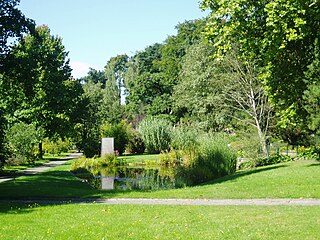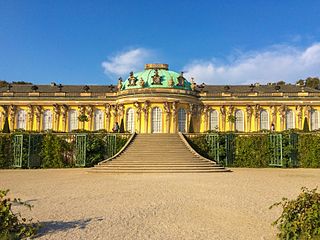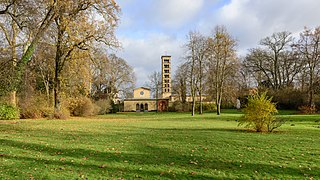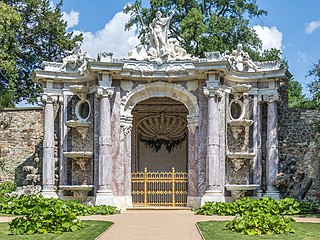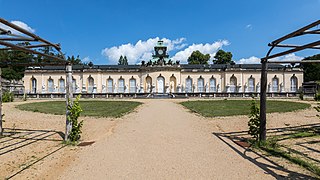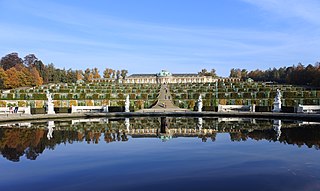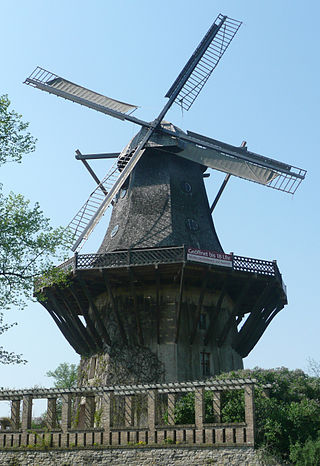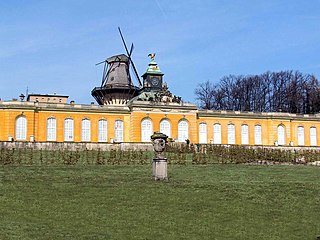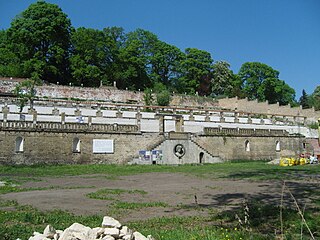Self-guided Sightseeing Tour #9 in Potsdam, Germany
Legend
Guided Free Walking Tours
Book free guided walking tours in Potsdam.
Guided Sightseeing Tours
Book guided sightseeing tours and activities in Potsdam.
Tour Facts
3.9 km
60 m
Experience Potsdam in Germany in a whole new way with our free self-guided sightseeing tour. This site not only offers you practical information and insider tips, but also a rich variety of activities and sights you shouldn't miss. Whether you love art and culture, want to explore historical sites or simply want to experience the vibrant atmosphere of a lively city - you'll find everything you need for your personal adventure here.
Activities in PotsdamIndividual Sights in PotsdamSight 1: Biologischer Garten
The Botanical Garden in Potsdam, is a botanical garden and arboretum maintained by the University of Potsdam. It has a total area of 8.5 hectares, of which 5 hectares are open to the public, and is located immediately southwest of the Orangery Palace at Maulbeerallee 2, Potsdam, in the German state of Brandenburg. It is open daily; an admission fee is charged for the glasshouses only (2017).
Sight 2: Sanssouci Park
Get Ticket*Sanssouci is a historical building in Potsdam, near Berlin. Built by Prussian King Frederick the Great as his summer palace, it is often counted among the German rivals of Versailles. While Sanssouci is in the more intimate Rococo style and is far smaller than its French Baroque counterpart, it, too, is notable for the numerous temples and follies in the surrounding park. The palace was designed and built by Georg Wenzeslaus von Knobelsdorff between 1745 and 1747 to meet Frederick's need for a private residence where he could escape the pomp and ceremony of the royal court. The palace's name is a French phrase meaning "without worries" or "carefree", emphasising that the palace was meant as a place of relaxation rather than a seat of power.
Sight 3: Chinese House
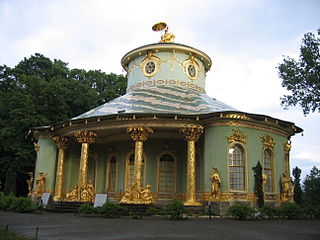
The Chinese House is a garden pavilion in Sanssouci Park in Potsdam, Germany. Frederick the Great had it built, about seven hundred metres southwest of the Sanssouci Summer Palace, to adorn his flower and vegetable garden. The garden architect was Johann Gottfried Büring, who between 1755 and 1764 designed the pavilion in the then-popular style of Chinoiserie, a mixture of ornamental rococo elements and parts of Chinese architecture.
Sight 4: Marly Garden
Get Ticket*The Marly Garden is a garden area in Potsdam's Sanssouci Park.
Sight 5: Neptungrotte
The Neptune Grotto close to the Obelisk entrance in Sanssouci Park, Potsdam, was created by Frederick the Great between 1751 and 1757 to beautify the park.
Sight 6: Picture Gallery
The Picture Gallery in the Sanssouci Park of Potsdam was built in 1755–64 during the reign of Frederick II of Prussia under the supervision of Johann Gottfried Büring. The Picture Gallery is situated east of the palace and is the oldest extant museum built for a ruler in Germany.
Wikipedia: Sanssouci Picture Gallery (EN), Website, Heritage Website
Sight 7: Sanssouci Palace
Get Ticket*Sanssouci Palace is a former summer residence of the kings of Prussia in Sanssouci Park in Potsdam, Germany. The single-wing complex was built between 1745 and 1747 by Frederick the Great by Georg Wenzeslaus von Knobelsdorff in the Rococo style. The concert hall, the castle library and the marble hall are worth mentioning. As part of the palaces and parks of Potsdam and Berlin, the "Prussian Versailles" was inscribed on the UNESCO World Heritage List in 1990.
Sight 8: Historische Mühle
The Historic Mill of Sanssouci is a mill in Potsdam, Germany. Thanks to the legend of The Miller of Sanssouci, the Mill became famous, particularly due to its association with Frederick the Great and his summer palace of Sanssouci.
Wikipedia: Historic Mill of Sanssouci (EN), Heritage Website, Youtube
Sight 9: Neue Kammern von Sanssouci
The New Chambers is part of the ensemble of Sanssouci palace in Sanssouci Park, Potsdam, Germany. They were constructed for King Frederick the Great of Prussia from 1771 to 1775.
Wikipedia: New Chambers (Sanssouci) (EN), Website, Heritage Website
Sight 10: Winzerberg
The Winzerberg is located in Potsdam and is located east opposite Sanssouci Park. The entrance from the southern foot of the hill is formed by the imposing Triumphal Gate. The Winzerberg is part of the administrative inventory of the Prussian Palaces and Gardens Foundation Berlin-Brandenburg, is maintained by a support association that has already completely restored it and has been part of Potsdam's World Heritage Site since 1990.
Share
How likely are you to recommend us?
Disclaimer Please be aware of your surroundings and do not enter private property. We are not liable for any damages that occur during the tours.
GPX-Download For navigation apps and GPS devices you can download the tour as a GPX file.
